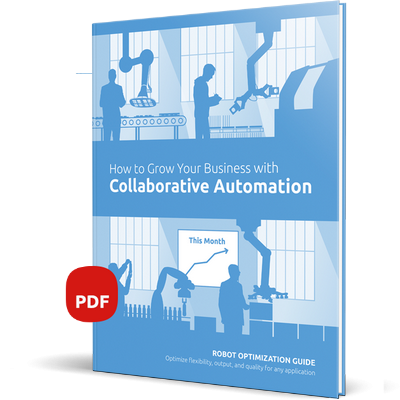#ThoughtsOnRobots: Philip Courtois


In this interview with OnRobot, President Philip Courtois from Thinkbot Solutions shares his views on the future of collaborative applications.
After more than 20 years of working with automation, Philip Courtois from the American system integrator Thinkbot Solutions has a clear view of the advantages of collaborative applications.
“There is a long list of advantages such as versatility, price point, and ease of use that I could spend all day talking about. But one thing that is typically not focused on is that collaborative applications assist workers instead of replacing them.”
“There are plenty of tasks that humans can do better than robots, so an ideal collaborative application helps the human focus on the more advanced tasks while the robot does the rest. To me, this is one of the biggest advantages of collaborative applications compared to typical industrial robot applications.”
Can be deployed in a day
According to Philip Courtois, the fast deployment of collaborative applications also appeals to many end-users.
“Many collaborative applications can be built using off-the-shelf products that are proven to be compatible. With tutorials and sample code readily available for many common applications, it is possible to be up and running within a day. Of course, on the other end of the spectrum, there are collaborative applications that require much more complexity.”
Ideal for social distancing
Looking forward, Philip Courtois thinks the Covid-19 pandemic will accelerate the use of collaborative applications in the future.
“I think that one lasting effect of the pandemic will be the continued need to distance and minimize physical contact between workers – specifically factory workers. Collaborative applications are ideal for assisting workers by taking over the dirty, dull, and dangerous tasks but also by simply handling material so they can stay put at a safe distance from their coworkers. I think this will result in significant growth in simple collaborative applications.”
Keep complexity to a minimum
When deploying collaborative applications, Philip Courtois points out a number of success factors.
“The most important factors of success are keeping the system complexity to a minimum and using system components that are flexible and easy to change.”
“Also, it’s important to listen to your employees and include them early in the decision-making process. Operators often know more than anyone about the most efficient way to perform their tasks, so they may have important input about how to implement the best and safest collaborative application.”
5 important tips to manufacturers
For manufacturers about to deploy a collaborative application, Philip Courtois has 5 important tips:
- Confirm your need
Make sure that you want the benefits of a collaborative application and not, for example, a sealed industrial cell. Otherwise, the system will never live up to your expectations. - Avoid customization
Do not reinvent the wheel unless you have to. In many cases, there is an off the shelf component available that works better and is cheaper than what you can make. - Think ahead
Your application needs will most likely change with time so choose future proof system components. - Keep it simple
The less complex you make the application, including the programming, the easier it is to change and troubleshoot the system. This will help keep cost and downtime to a minimum. - Take ownership
Assign two employees to be responsible for the maintenance, optimization, and future changes of the system. Relying on a system integrator for every issue or change is expensive and will leave you vulnerable.
-----------------------------------------------------------------------
#ThoughtsOnRobots

|
Come far crescere il tuo business con applicazioni collaborative
Con il sorgere di strumenti più intelligenti e adattivi, i robot possono ora funzionare con maggiore velocità, forza, sicurezza e precisione, svolgendo un'ampia gamma di compiti, massimizzando al contempo il ROI. Per saperne di più su come è possibile ottenere una produzione più rapida a costi minori, scarica il nostro eBook gratuito.
RICEVI L'eBOOK GRATUITO
|

|

